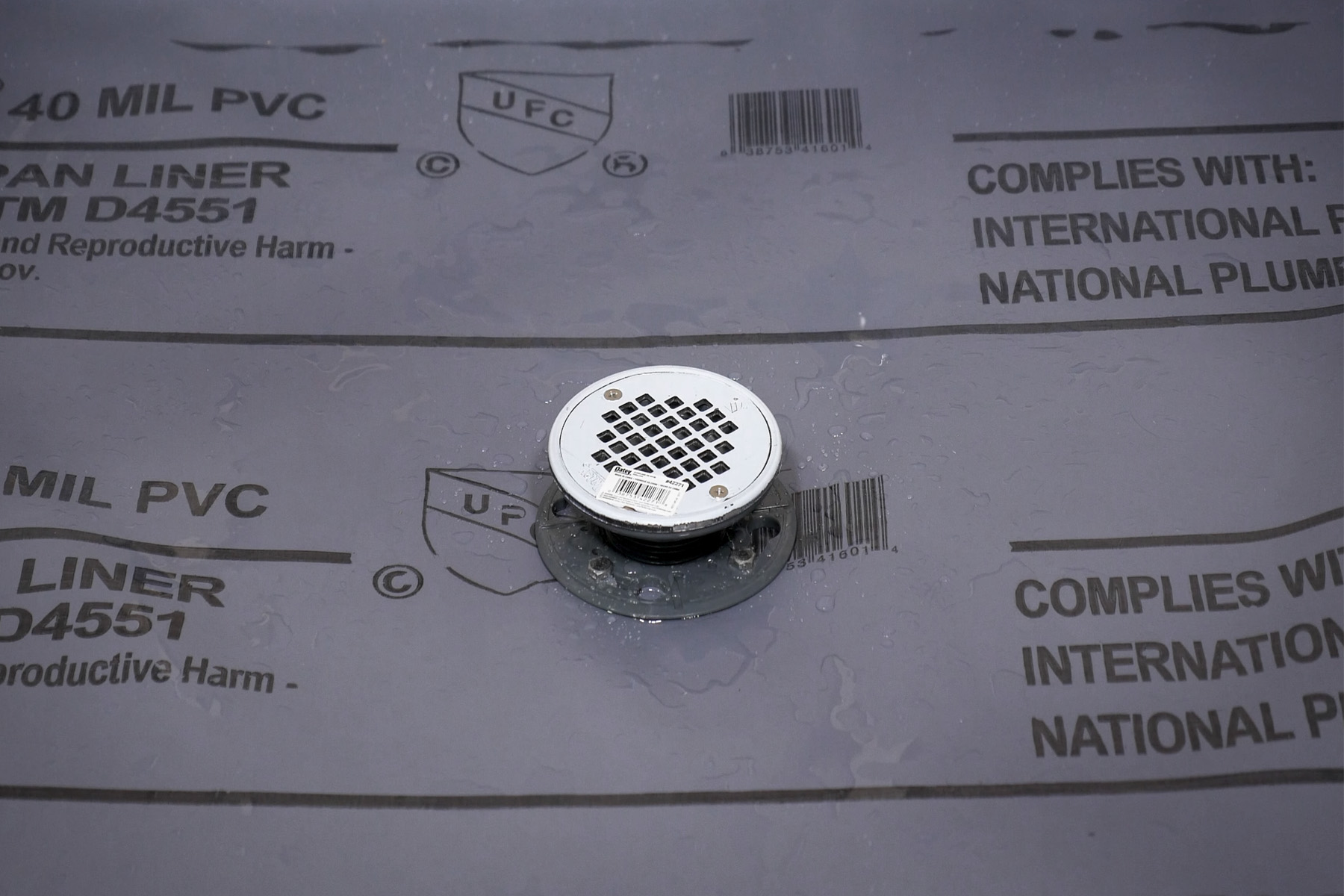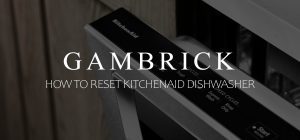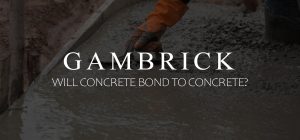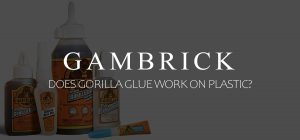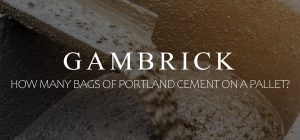Hot Mop Vs Membrane
Bathroom showers are the wettest area of any home. They’re exposed to large quantities of water, moisture and humidity which makes them prone to leaks, mold, mildew and other forms of water damage. To avoid the high cost of water damage, your shower floor must be completely waterproof. This layer of waterproofing is installed between the tile and subfloor. When a shower floor is properly waterproofed, water will flow into the drain without leaks. There are two main ways to waterproof a shower: Hot Mop & Membrane. Hot Mop uses multiple layers of asphalt paper and hot tar to seal and waterproof a shower floor. Membrane uses a single waterproof membrane, usually made of rubber, to waterproof the floor. Both methods work really well but have their own pros vs cons.
Hot mopping is one of the most effective ways to waterproof a shower floor. Multiple layers of hot asphalt and felt paper are installed on top of each other in an overlapping pattern to provide a tight seal. The paper is overlapped to channel water into the drain if it penetrate through the tar. It’s a very effective way to waterproof a shower when done correctly. But if the asphalt layers aren’t installed properly, or there isn’t enough tar, the result could be leaks.
A waterproofing membrane has the benefit of being a single large piece of rubber. There are no seams or penetrations so there’s no place for water to go if it reaches the membrane. But membranes can be hard to work with in large areas. I prefer them in small showers.
In this article we’ll discuss both Hot Mop & Membranes in detail.
Ways To Waterproof A Shower Floor
Two of the most effective ways to waterproof a shower floor is Hot Mopping and using a membrane. Both methods create a waterproof layer of protection above the subfloor and below the tile. When installed properly, they create a strong barrier which prevents leaks.
A custom shower typically includes a mud floor, thinset and grout. Each of these materials is water resistant, but not waterproof. Without a true waterproof layer under the tile floor, your shower would eventually leak and grow mold.
When a waterproofing layer is properly installed it helps contain, water, moisture and humidity in the bath space.
- Hot Mop Waterproofing: Multiple layers of asphalt paper and hot tar are installed inside a shower floor. The asphalt layers are overlapped in a way that helps prevent leaks. When done properly, a hot tar shower floor is completely waterproof. The great thing about Hot Mop is that it can be used in any size or shape shower including on built in benches.
- Membrane Waterproofing: A single waterproof membrane, usually made from rubber, is rolled out and formed to the contours of the shower floor. Since there are no seams or holes it’s completely waterproof. But if a shower is oddly shaped, round or large, a single membrane becomes very hard, if not impossible, to use.
Both waterproofing methods work really well and have some advantages. Below we’ll discuss each method in detail.
Before you waterproof a shower make sure the floor is properly sloped into the drain. If your shower floor isn’t sloped properly you could get standing water on and under the tile floor.
Why Waterproof A Shower Floor?
A shower is exposed to extreme amount of water, moisture and humidity. This makes them prone to leaks in the floor which causes mold, mildew, bacteria, rot and deterioration. To avoid water related issues, you must waterproof the shower floor and at least 12 inches up the walls.
The raw materials used to finish a typical shower are thinset, a mud floor and grout. These are all permeable substances that absorb water. They provide some level of water resistance, but they’re not waterproof. Without a true waterproofing layer, water will work it’s way under and between these layers where it can cause damage.
The major benefits of bathroom floor waterproofing include:
- It helps prevent leaks and water related damage.
- Waterproofing prevents mold, bacteria and mildew growth. It’s very common for mold to start in a bathroom and then spread throughout a home.
- Saves money in the long run by preventing future damage.
Waterproofing must last the entire life of the shower. If the waterproofing layer fails you’ll have to tear out the shower to replace it. So choosing the right method and proper installation are very important.
Hot Mop Waterproofing A Shower
Hot mopping is one of the most effective ways to waterproof a shower floor. Multiple layers of asphalt paper and hot tar are installed on the shower floor and about 12 inches up the walls. Typically a base layer of tar is applied first, followed by paper, then tar, paper and a last coat of tar. As new layers of paper are applied, special care is taken around the corners and seams to seal the shower tight.
Smoking hot tar is delivered to the job by truck and brought into the house in buckets. It’s applied to the asphalt paper with a mop. Hence the name hot mop.
The tar is so hot it becomes a liquid which seeps into all the small cracks and crevices. Once dry, the multiple layers of hot tar and paper create a water tight seal.
Layers of asphalt paper are stapled in place tight to contours of the shower. Each corner and edge is carefully covered with overlapping layers of paper and tar. When done correctly the seal is very hard to penetrate which is why this method is so effective. Any seams, holes and/or cracks are filled with liquid tar. When the tar dries, the shower floor is water tight.
Hot mopping is done in multiple overlapping layers which makes it extremely strong and versatile. Paper strips can be cut to seal edges and corner tight. Then hot liquid tar is applied which seals all the gaps and cracks.
Tar can be applied to an entire shower floor including built in bench seating.
A leaking shower floor can cause mold, mildew and deterioration which may spread to other areas of the house. Hot mopping creates a water tight barrier between the tile and subfloor.
The Pros Vs Cons Of Hot Mopping
Hot mopping a shower floor is a great way to make it water tight. It’s one of the most effective ways to prevent shower leaks which may cause mold, mildew, bacteria, rot and deterioration. Multiple overlapping layers of asphalt paper are cut and stapled in place followed by coats of hot liquid tar. First a layer of tar is applied to the entire shower floor, then paper, more tar, another layer of paper followed by a final coat of tar.
Each layer of liquid tar seals all the cracks and gaps in the paper. If done correctly, the end result is a water tight shower floor.
The biggest downside of hot mopping is the cost and expertise needed to do it. The asphalt paper must be cut and layered perfectly in an overlapping design in order to lock water out. And the tar must be mopped on just right when it’s still smoking hot and liquid. It’s very easy to make a mistake or burn yourself with tar. This is not a DIY project which means you’ll have to hire a Pro.
Because the asphalt paper is sealed tight with multiple layers of liquid tar, hot mopping can be used to waterproof any size or shape shower. It’s a very versatile method that works better than a membrane for large or complex showers.
But it may be overkill for a small shower that can be easily sealed using a much cheaper membrane.
Pros
- Hot mop shower floors last for decades.
- Liquid tar seeps into the cracks, gaps and crevices which creates a water tight seal.
- A hot mopped floor prevents leaks, bacteria, mold, mildew, rot and deterioration.
- Made from high quality hot liquid tar and three-layered roofing grade felt.
- Multiple layers of asphalt felt helps seal the corners and edges.
- Can be applied to benches.
- Lasts at least 15 years when properly installed.
Cons
- Expensive because you have to hire a Pro.
- Very easy to mess up the seal if you’re not experienced.
- Dangerous to perform because the tar is smoking hot.
- Not a DIY project.
- Smells bad.
Membrane Waterproof A Shower Floor
A great way to waterproof a small shower is a CPE/PVC membrane. CPE/PVC waterproofing membrane comes as a large thin sheet of rubber like material. It’s laid over the shower floor and up the walls about 6-12 inches as a single sheet with no cuts or seams. Because the material is water tight and there are no holes, there’s no where for the water to go other than down the drain.
CPE/PVC liners can be purchased at Home Depot and other home improvement stores. They’re easier to work with than hot mopping, don’t smell and aren’t dangerous to work with. But they’re not as versatile and don’t work as well in oddly shaped, curved or large showers because the membranes only come up to 6 foot wide.
In addition to covering the entire shower floor, the liner also has to run 6-12 inches op the walls. So a 6′ liner only seals about a 4′ to 5′ wide shower floor. If your shower is wider than that you need a seem which defeats the purpose of using a one piece liner.
While hot mopping can last for over 15 years when properly installed, a CPE/PVC sheet can last longer. Once properly installed, membrane sheets can last for over 30 years because the rubber doesn’t break down or deteriorate.
The Pros Vs Cons Of A Membrane
A waterproofing membrane is a great way to make a shower floor water tight. It’s essentially a large single sheet of flexible rubber that you form to the floor and side walls of a shower. Since there are no holes or cuts through the membrane, there’s no where for water to go but down the drain.
Membranes are great for small simple showers. But they’re not as good for large showers or showers with complex shapes.
The largest membrane I could find is 6 foot wide and sold by Oatey. Since you need to wrap the membrane up the side walls at least 6-12 inches, a 6′ wide membrane only waterproofs a shower between 4′ to 5′.
To waterproof a large shower with a membrane you need multiple overlapping piece which get glued together. This creates seems and a possible point of failure.
Another tough spot are shower seats. They’re very common and harder to waterproof with a membrane vs hot mopping. The bench membrane will have to be overlapped on top of the floor membrane and glued in place which creates areas that water can eventually penetrate. I prefer the one piece seal of hot mopping.
For small showers, a membrane is a great waterproofing choice. But for large and complex showers I prefer hot mopping.
Pros
- When installed correctly, a one piece membrane is completely waterproof.
- A waterproofing membrane is strong, flexible and tear-resistant.
- Membranes typically last longer than hot mopping.
- Sheets are flexible and elastic enough to bend around corners and edges.
- They’re easy to work with and safe.
- A cheaper option that hot mop.
- Works great in small showers.
Cons
- Not the best choice for large or complex showers.
- Hot mop is better for waterproofing shower benches.
- To waterproof a large shower with a membrane you need seems.
Summary: Hot Mop Vs Membrane
Bathroom showers are the wettest area of any home. They’re exposed to large quantities of water, moisture and humidity which makes them prone to leaks, mold, mildew and other forms of water damage. To avoid the high cost of water damage, your shower floor must be completely waterproof. This layer of waterproofing is installed between the tile and subfloor. When a shower floor is properly waterproofed, water will flow into the drain without leaks. There are two main ways to waterproof a shower: Hot Mop & Membrane. Hot Mop uses multiple layers of asphalt paper and hot tar to seal and waterproof a shower floor. Membrane uses a single waterproof membrane, usually made of rubber, to waterproof the floor. Both methods work really well but have their own pros vs cons.
Hot mopping is one of the most effective ways to waterproof a shower floor. Multiple layers of hot asphalt and felt paper are installed on top of each other in an overlapping pattern to provide a tight seal. The paper is overlapped to channel water into the drain if it penetrate through the tar. It’s a very effective way to waterproof a shower when done correctly. But if the asphalt layers aren’t installed properly, or there isn’t enough tar, the result could be leaks.
A waterproofing membrane has the benefit of being a single large piece of rubber. There are no seams or penetrations so there’s no place for water to go if it reaches the membrane. But membranes can be hard to work with in large areas. I prefer them in small showers.
If you have any questions or comments about hot mopping or using a membrane to waterproof a shower floor, email any time.


